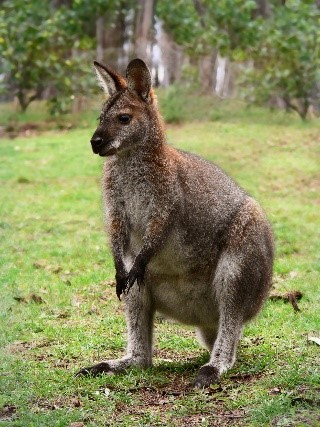Published on: August 27, 2022

Wallabies
Wallabies

Why in news?
A new attraction awaits tourists visiting Mysuru zoo as red-necked wallabies that were recently added to the zoo’s vast animal collection, have been put on display ahead of Dasara festivities.
Highlights:
- The wallabies – one male and two female – were received in June this year from Czech Republic under an animal exchange programme.
The wallabies:
- A wallaby (/ˈwɒləbi/) is a small or middle-sized macropod native to Australia and New Guinea, with introduced populations in New Zealand, Hawaii, the United Kingdom and other countries.
- They belong to the same taxonomic family as kangaroos and sometimes the same genus, but kangaroos are specifically categorised into the four largest species of the family.
- The term “wallaby” is an informal designation generally used for any macropod that is smaller than a kangaroo or a wallaroo that has not been designated otherwise.
- There are nine species (eight extant and one extinct) of the brush wallaby (genus Notamacropus). Their head and body length is 45 to 105 cm (18 to 41 in) and the tail is 33 to 75 cm (13 to 30 in) long. The 19 known species of rock-wallabies (genus Petrogale) live among rocks, usually near water; two species in this genus are endangered.
- The two living species of hare-wallabies (genus Lagorchestes; two other species in this genus are extinct) are small animals that have the movements and some of the habits of hares.
- The three species (two extant and one extinct) of nail-tail wallabies (genus Onychogalea) have one notable feature: a horny spur at the tip of the tail; its function is unknown.
- The seven species of pademelons or scrub wallabies (genus Thylogale) of New Guinea, the Bismarck Archipelago, and Tasmania are small and stocky, with short hind limbs and pointed noses.
- The swamp wallaby (genus Wallabia) is the only species in its genus. Another wallaby that is monotypic is the quokka or short-tailed scrub wallaby (genus Setonix); this species is now restricted to two offshore islands of Western Australia which are free of introduced predators.
-
The seven species of dorcopsises or forest wallabies (genera Dorcopsis (four species, with a fifth as yet undescribed) and Dorcopsulus (two species)) are all native to the island of New Guinea.

